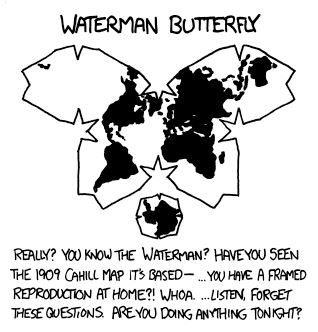

There isn’t a way to check if you’re connected to a Bluetooth device through automations :/.
The best you can do is set an action after you connect/disconnect from a known Bluetooth device


There isn’t a way to check if you’re connected to a Bluetooth device through automations :/.
The best you can do is set an action after you connect/disconnect from a known Bluetooth device

Well that’s very cool, best of luck to em!


I mean you’re objectively correct, but those states don’t seem like they’re gonna stop capital punishment anytime soon. If current death row inmates ask to be executed by nitrogen, I don’t think there is any harm in trying.

I hope you’re right, but vr worlds still seem far off to me. I can see it working if either synthetic data is better than expected, or they have the funding to create the training data manually.
To my knowledge, there arnt large free repositories of vr worlds like there are for text and images, so I expect progress to be a lot slower. Still cool tech none the less, I wouldn’t have thought it ti be possible before reading this article.


I mean how many progressive stars have the death penalty? Most of the pushback towards it is because you could never design an ethical test, and that prisons might make a mistake (such as impure nitrogen).
Lethal injections have a 7% failure rate, so at least 1 in every 14 executions are already botched.
“The odds of being tortured to death by lethal injection are pretty substantial. The odds of a botch with nitrogen hypoxia are uncertain,” Dunham told CNN. “I think it’s a choice to avoid a sure bad thing, as opposed to an affirmative embrace of nitrogen hypoxia.”
These are the same arguments that got the electric chair, and lethal injection approved. So unless we are going back to a firing line (which is practically painless, just messy), why not try to make it more ethical?

Hiber said the goal of adding AI is to help creators build more expansive online worlds, which are often referred to as metaverse platforms.
It seems like they want to capitalize on two recent trends; hopefully it can provide optimized worlds that can be used for more than just VR chat, but I have my doubts…
From the creator of arkenfox.js
AF (arkenfox) vs LW (librewolf) AF enables SB (safe browsing) and uses mozilla’s API key. LW doesn’t have a SB key (edit: note AF does block real time binary checks) AF updates same as Firefox. LW has no updater in windows AF can use any language, LW is limited to en-US AF restricts cross-site referrers by default LW ships with uBO - AF users have to do that manually and add/flip the two recommended filters as per the AF wiki So basically everything you see at Arthur’s independent test site at https://privacytests.org/ for LW applies to AF along with referrers (navigational) with a green check as well
Acrobat has a decent “auto create form fields” feature that I haven’t seen anywhere else and it saves me a lot of time


Well it sure is a good thing they are making everything smart nowadays….
But seriously I can’t believe how fast the car industry locked previously free features behind a subscription


Probably not, unless the military is hiding some next level tech.
For example, the current generation of detectors, nearly all of which weigh upwards of a ton, have to be placed within tens of meters of a reactor’s core—inside a facility’s fence.
Thanks for the recommendation, that looks pretty sweet and it’s FOSS so I’ll definitely check it out


Something something Skyrim horse armor something something….


Free Open Source Software
So any software where the code is public and the license allows for you to use/edit/redistribute (in some cases) for free.


You should be able to assign that vlan to a port (ex. eth0, eth1)


Just wanted to add this link explaining how to use tunnels in a more privacy respecting way
https://help.nextcloud.com/t/is-cloudflare-tunnel-safe-privacy-focused/150268/2
Problems with TLS (free option of routing on cloudlfare tunnels)
interception (or HTTPS interception if applied particularly to that protocol) is the practice of intercepting an encrypted data stream in order to decrypt it, read and possibly manipulate it, and then re-encrypt it and send the data on its way again. This is done by way of a “transparent proxy”: the interception software terminates the incoming TLS connection, inspects the HTTP plaintext, and then creates a new TLS connection to the destination.
I’d just like to interject for a moment. What you’re referring to as Linux, is in fact, GNU/Linux, or as I’ve recently taken to calling it, GNU plus Linux. Linux is not an operating system unto itself, but rather another free component of a fully functioning GNU system made useful by the GNU corelibs, shell utilities and vital system components comprising a full OS as defined by POSIX. Many computer users run a modified version of the GNU system every day, without realizing it. Through a peculiar turn of events, the version of GNU which is widely used today is often called “Linux”, and many of its users are not aware that it is basically the GNU system, developed by the GNU Project. There really is a Linux, and these people are using it, but it is just a part of the system they use. Linux is the kernel: the program in the system that allocates the machine’s resources to the other programs that you run. The kernel is an essential part of an operating system, but useless by itself; it can only function in the context of a complete operating system. Linux is normally used in combination with the GNU operating system: the whole system is basically GNU with Linux added, or GNU/Linux. All the so-called “Linux” distributions are really distributions of GNU/Linux.
Flawless logic